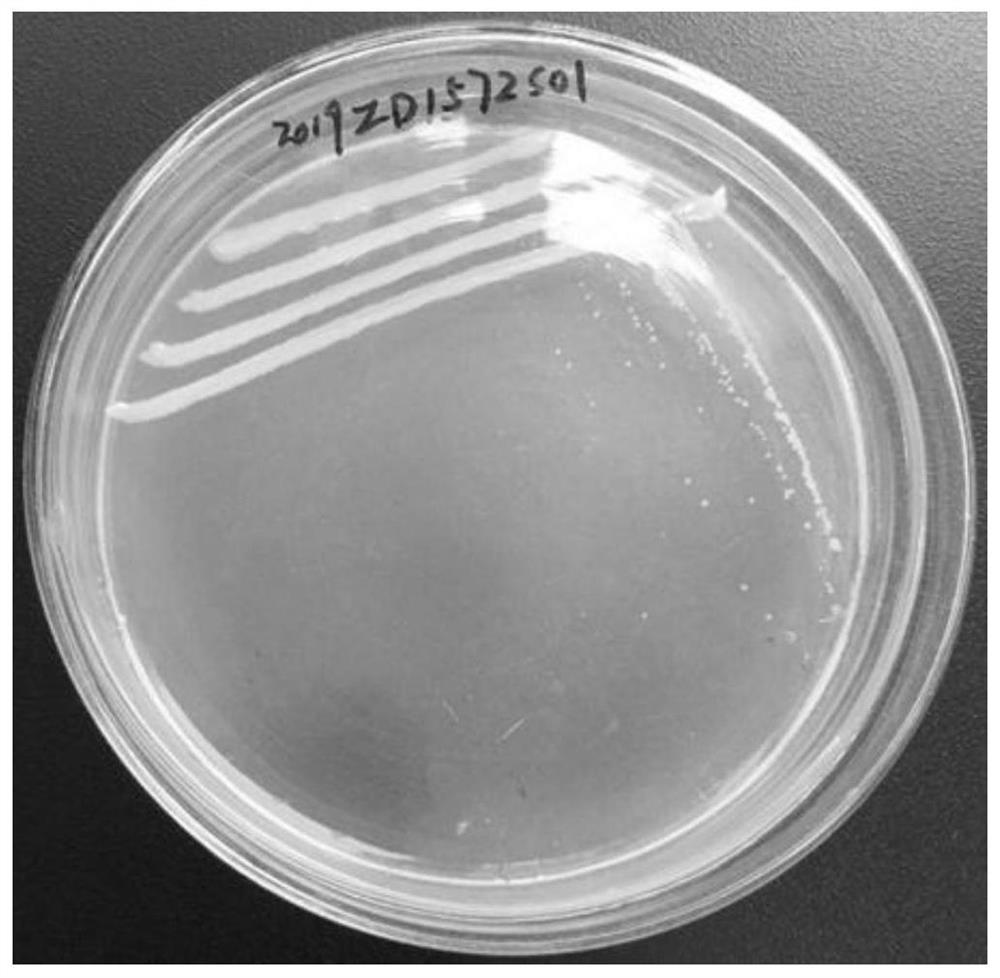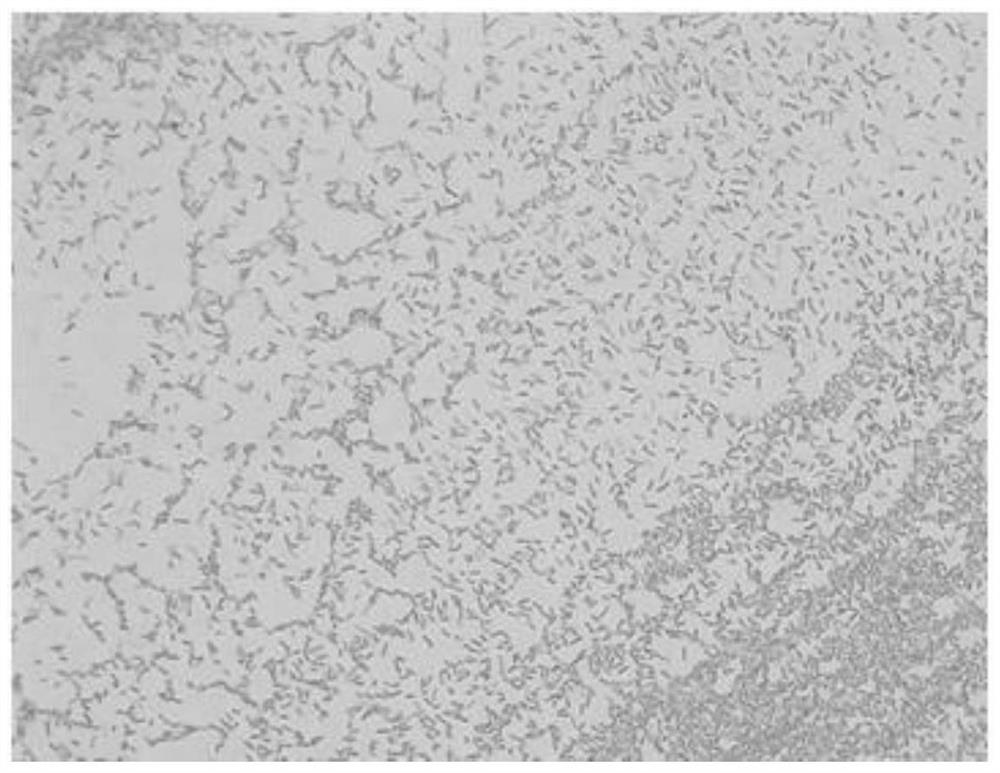A Strain Ochrobactrum intermedium 26B and Its Application
A technology of Paleobacterium intermedia and gdmccno, applied in bacteria, natural water treatment, biological water/sewage treatment, etc., can solve problems such as glyphosate residual pollution, achieve stable degradation performance, rich resource pool, and wide application prospects
- Summary
- Abstract
- Description
- Claims
- Application Information
AI Technical Summary
Problems solved by technology
Method used
Image
Examples
Embodiment 1
[0036] Example 1 Isolation and Identification of Bacterial Strains
[0037] 1. Screening and isolation of glyphosate-degrading strains
[0038] Collect the activated sludge from the wastewater treatment tank of the pesticide factory of Guangxi Nanning Institute of Chemical Industry, weigh 5g of the activated sludge sample and add it to 50mL of the above-mentioned MSM liquid medium containing glyphosate (50mg / L). After culturing at 30°C and 200rpm for 5 days, the mass concentration of glyphosate was increased from 50mg / L to 100mg / L, 200mg / L, 300mg / L, 400mg / L, and 500mg / L in sequence according to the inoculum size of 10%. , 600mg / L, 700mg / L, 800mg / L continuous enrichment culture. Then, the 8 times of transfer culture solution was serially diluted, spread on the MSM solid plate containing 300mg / L glyphosate, and cultured upside down at 30°C for 48h. After a single colony grows on the plate, pick a single colony and streak it on the MSM solid plate for purification, and obtain a...
Embodiment 2
[0056] Example 2 Study on the Degradation Effect of Ochrobactrum intermedium 26B on Glyphosate
[0057] 1. Experimental method
[0058] (1) Seed solution preparation: After activating Ochrobactrum intermedium 26B stored in a -80°C refrigerator on an LB solid plate, insert 10 mL of LB liquid medium into the logarithmic phase overnight for activation and culture at 4°C. After centrifugation, the bacterial cells were washed with physiological saline (0.9% NaCl), and the obtained bacterial cells were used as inoculum.
[0059] (2) Degradation performance measurement: According to the initial inoculation amount of 0.045g / L, inoculate 50mL of MSM culture solution containing glyphosate (500mg / L) respectively, with no inoculation as the control, and each group has three repetitions. Cultivate at 30°C, 200rpm constant temperature shaker for 48h, take samples every 6h, use dilution to coat the plate, record the number of colonies formed to represent the growth of strain 26B, and use UP...
Embodiment 3
[0084] Example 3 Study on the Degradation Effect of Ochrobactrum intermedium 26B on Glyphosate in Soil
[0085] 1. Experimental method
[0086]Soil samples to be tested: Farmland topsoil (3-10cm), taken from the experimental field of the teaching farm of South China Agricultural University, belongs to red loam soil, and glyphosate has not been applied for more than 3 years.
[0087] After collecting the soil samples for testing, first place them in a cool and ventilated place to dry naturally, then grind them after air drying, pass through a 2mm sieve, take a certain amount of glyphosate and dissolve them in sterile water, and then soak them in diatomaceous earth to make the glyphosate completely absorbed . The soaked diatomaceous earth is placed in a fume hood to dry, and it is mixed into the soil so that the final concentration of glyphosate in the soil is 100mg / kg. Take 500g of soil samples and cultivate them in a constant temperature and humidity incubator at 30°C, accor...
PUM
| Property | Measurement | Unit |
|---|---|---|
| diameter | aaaaa | aaaaa |
Abstract
Description
Claims
Application Information
 Login to View More
Login to View More - R&D
- Intellectual Property
- Life Sciences
- Materials
- Tech Scout
- Unparalleled Data Quality
- Higher Quality Content
- 60% Fewer Hallucinations
Browse by: Latest US Patents, China's latest patents, Technical Efficacy Thesaurus, Application Domain, Technology Topic, Popular Technical Reports.
© 2025 PatSnap. All rights reserved.Legal|Privacy policy|Modern Slavery Act Transparency Statement|Sitemap|About US| Contact US: help@patsnap.com



